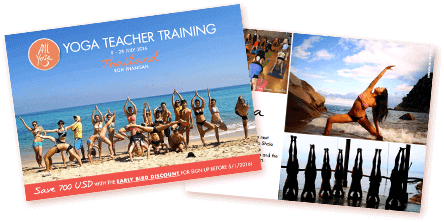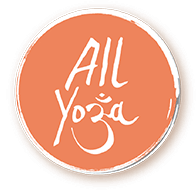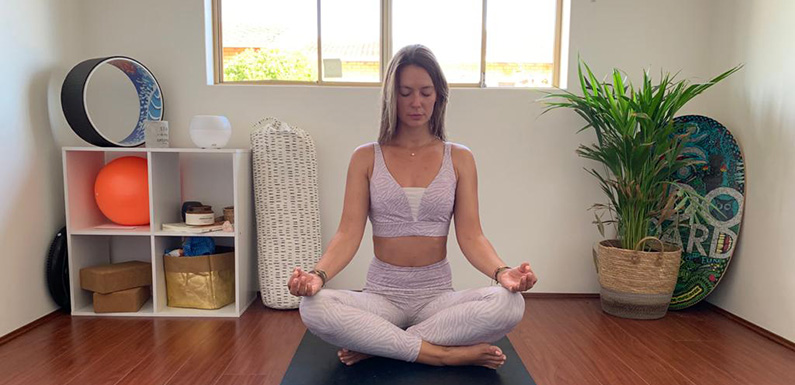6 Tips For Getting Your Personal Practice Up And Running
If you’re looking to get your personal practice going then you need to be prepared to adopt a new attitude and for yoga to take on a different significance in your life. That might not be what you want to hear, but if you’re coming from mostly guided classes and want to form your own personal practice, it’s something you need to acknowledge. The appeal of going to a yoga class is to zone out. You go to a class and have a teacher tell you what to do, down to the smallest detail, and you’re led by them; it’s their responsibility. This is fine to start with; it’s necessary, there’s only so much you can learn in any given time. But there comes a point, after you no long consider yourself a beginner, once you think you’re quite experienced, that you realise there’s an infinite amount of complexity within your body and that to begin to understand you have to adopt a personal practice. Attempting to transition from a teacher telling you what to do to your body telling you what to do is making yourself responsibility for your own yoga.
Once you’ve learnt the basics – how to get into a pose, what you should be doing in a pose – you need a dedicated period of time to integrate that knowledge. Not just to know it as objective direction, but to embody it and see how it applies to you specifically. Here are some tips towards getting there.
Find a practice
If you’re at the point of starting or trying to cement a personal practice, you probably already know what your practice is, but if you don’t, keep in mind that a good place to start is within your own temperament. What I mean by this is, if you’re energetic and conscientious, Ashtanga or Vinyasa are probably for you. If you’re slow to action, Hatha, if you tend to overthink, Iyengar. The point is work within your capacities, and then once you’re competent and confident, maybe branch out then, adopt something more challenging. If you’re not sure, just pick something. The important thing is to start to engage with your body in a dedicated way and build up that physical awareness, you can always branch out into different styles or even different physical disciplines altogether.
Find space
If you’re lucky enough to have a spare room, perfect. Sometimes making that shift to be able to start your practice is far smoother if you can just go and walk into the next room, making that physical shift to help you make that mental shift into practice time. If all you have is a couple square metres on your bedroom floor, this still works. A special space helps you change mindsets, but you can do without it. And though sometimes it’s good to have a dedicated space for your practice, don’t be shy about taking it to a park or the backyard if you feel the urge to be outside once in a while.
Find time
It’s sounds kind of basic but the basics can be forgotten easily enough. If you don’t have time set aside for your practice, then it most likely won’t happen. This is largely a matter of personal preference, and sometimes holding up a routine can be hard, so make it easy on yourself. For me, I think that it’d be best if I start my day off with my practice, then have breakfast, you know, practice on an empty stomach the way they told me to when I did my courses. Realistically though, I’m far more likely to do my practice if I’ve eaten and it’s later in the day. So don’t live in Should’s. Try and apply what you know is most likely to work for you. I think temperamentally – excluding Ashtangi’s maybe – the people who’re drawn to yoga are pretty flakey at the best of times, so keep that in mind when you’re planning a time to practice and try to make a plan based on what you’re really like, not what you’d to be. Although, having said this, it’s important to have a vision or a goal of where you’d like to be, but you have to start within your own capabilities.
Find the right mindset
If you’re doing your yoga everyday, like everything, sometimes it can become monotonous and boring, but this is the reason you do yoga. Yoga, the physical poses, are about sharpening yourself, not practising putting yourself into complicated positions to show off, but practicing the ability to concentrate on your body while you’re in those complicated positions. So make sure you concentrate. You’ll figure out how as you string together days, but essentially, do what works for you, and you only know what works for you by figuring it out yourself. Maybe it’s starting with walking into that room you chose for your practice, maybe it’s a meditation to get you into that mindset, checking in with your body and allowing your warm up to come organically. Maybe you do one cycle of a Nidra body scan, whatever works for you. And know that what worked one day may not work everyday, so be adaptable to what you feel in the present moment and work from there. This point I think is the most valuable.
Plenty times when things aren’t working it’s because you’re trying to go against the body instead of with it, so start with that self awareness. Start with what you feel to be true in the present moment. But conversely, don’t use that feeling to avoid doing your practice, sometimes the ball just needs to get moving and what’s needed is a push to overcome that initial inertia.
Find consistency
Sometimes you just can’t be bothered, but it’s important to know the difference between sedentary inertia and genuine fatigue. So there’s two sides to this point. The first is you always feel better after having done your practice. It grounds, it resets, it brings you back to a centred and concentrated state of mind, so no matter what state you’re in, whether you’re scattered or nervous or agitated, your practice is there to ground you, so you’ll always feel better after having done it. The second is that sometimes you need to rest. You might be on a roll and want to keep practicing but a day off is as important as the days on. For me I’ve found 6 and 1 works, but experiment and find out for yourself.
As well, doing the same practice for a consistent period allows you to understand your body and the poses involved more deeply, and so don’t be shy about adding to your practice, and maybe taking away things that aren’t as necessary as they once were. Allow your practice to evolve as your body needs. The whole point of a personal practice is to let your body become your teacher, so when you feel those impulses towards improvised stretches – maybe you’re feeling pulled towards deepening a stretch in a particular way quite regularly – then listen to your body and find a pose that targets that area more directly.
Find patience
This is my final point, and it’s the most important. The culture we live in, the way we lead our lives, patience isn’t something that’s fostered. Phones and social media and Netflix, these things can condition you to expect things like rewards and payoffs instantaneously, so it’s important to keep this in mind. Don’t expect results overnight. Don’t expect consistency of mood or motivation. Acknowledge and accept what you feel each day and work with that to keep a consistent practice and eventually you’ll see the benefits of the work you’ve put in start to appear, be it physically, mentally, emotionally, or spiritually.
Read More Blogs
Want to Become a Yoga Teacher and/or
Deepen your Yoga Practice?
2 FREE EBOOKS FOR YOU:
- 20 things to know before choosing a yoga teacher training
- 7 tips to deepen your yoga practice right now

Copyright © 2024, All Yoga International ltd. All Rights Reserved
Privacy Policy
